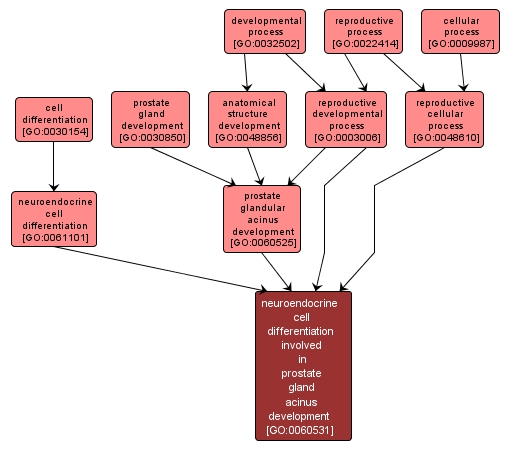GO TERM SUMMARY
|
| Name: |
neuroendocrine cell differentiation involved in prostate gland acinus development |
| Acc: |
GO:0060531 |
| Aspect: |
Biological Process |
| Desc: |
The process whereby relatively unspecialized cells acquires specialized structural and functions of a neuroendocrine cell of the prostate gland acinus. |
|

|
INTERACTIVE GO GRAPH
|














